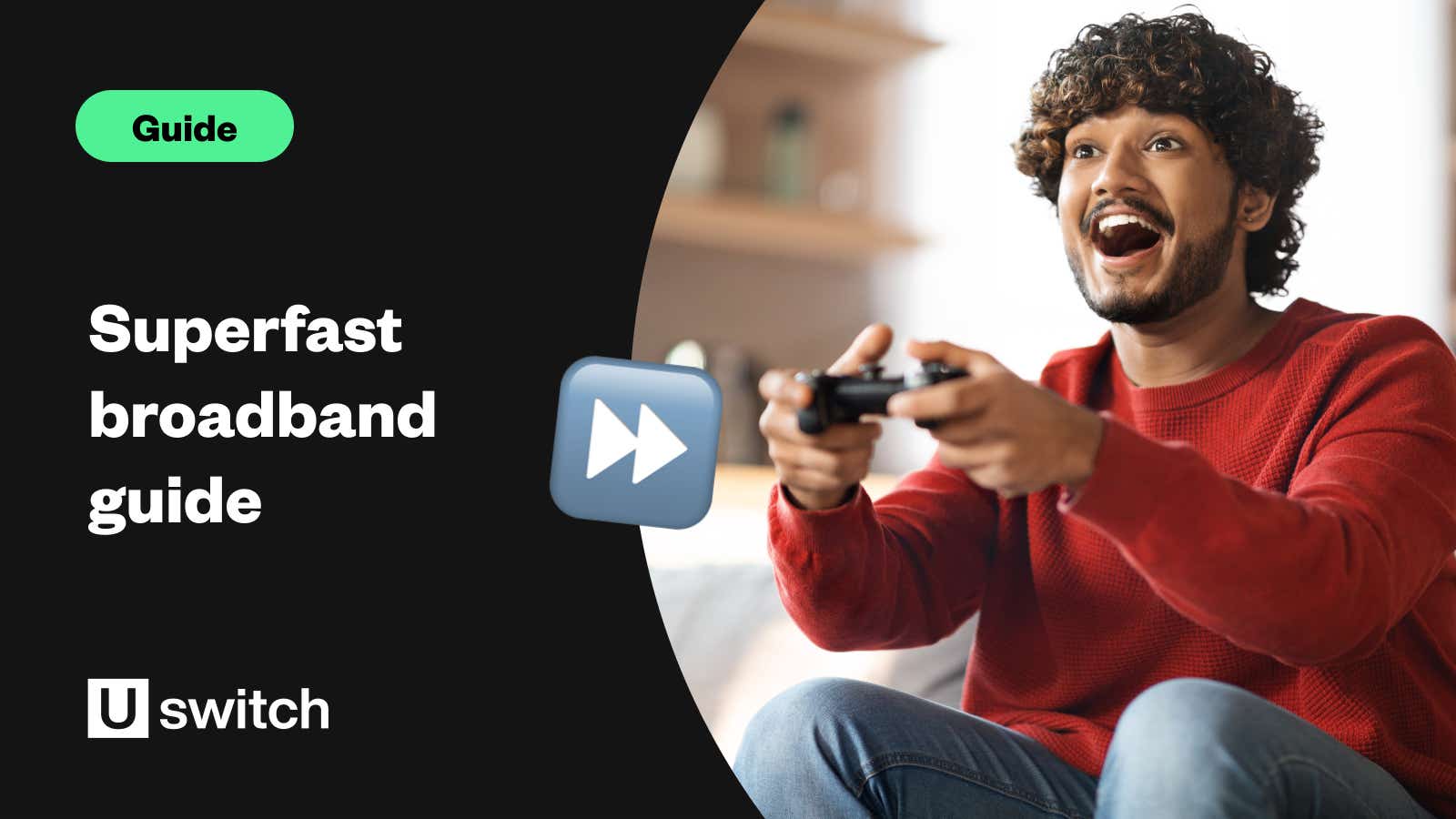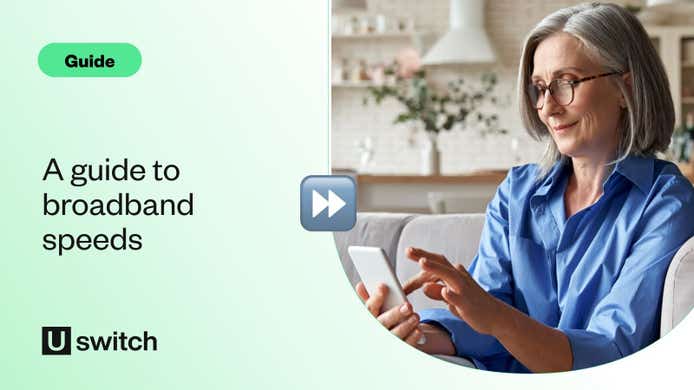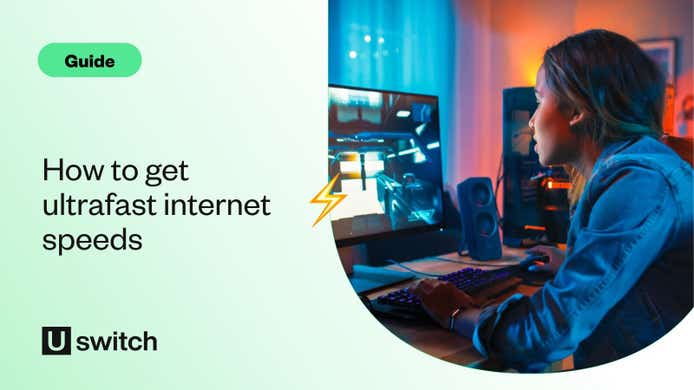'Superfast' broadband was a term often used by providers to describe an average speed of 30-80Mbps, which is what you can get on part-fibre, part-copper connections.
However, with ultrafast broadband speeds of 100Mbps and higher now much more widely available, it's a rarely-used term nowadays.
Compared to standard copper internet, superfast broadband lets more people at home use the internet at any one time. It can handle higher-quality streaming and gaming, and it can make it a lot easier for multiple people to work from home.
Superfast broadband is a broad category of speeds, running from 30Mbps to 80Mbps. Anything faster than that falls into either the Ultrafast or Gigabit categories.
Some form of superfast broadband is available to 98% of the UK from the majority of internet service providers, and in many cases is actually more affordable than slower, old-fashioned ADSL connections, especially if you happen to be out of contract on an ADSL package.
If you're still using copper ADSL and want to get faster internet, you can compare superfast and ultrafast packages in your area now with Uswitch.
Browse our range of fibre broadband deals
Choose between our wide range of fibre broadband deals on Uswitch.
How does superfast broadband work?
Superfast speeds usually reach homes via a part-fibre broadband connection, which uses fibre-optic cables up until the local street cabinet, and then copper phone lines for the final leg of the journey to your home.
Some full fibre deals will technically offer superfast speeds too, but they are usually reserved for entry-level packages. Plus, the full fibre connection comes with the capability to boost your speed much further - all the way up to 1Gbps.
Fibre-optic cables can transfer more data at faster speeds than copper wires, and so the more your connection is supplied by fibre-optic cables, the faster your broadband speeds will be.
When shopping for superfast broadband deals, you’ll notice that speeds are given as an average of speeds available to 50% of customers in your area during peak times. As such, superfast broadband speeds often appear in comparison tables in a similar range of speeds: 36Mbps, 50Mbps, 67Mbps and 76Mbps are the three most common speeds for superfast broadband you’ll see on our comparison tables.
Find out how fast your current broadband is with our broadband speed test.
Should I get superfast broadband?
Superfast broadband is suitable for all casual internet users and small households.
Superfast broadband should really be the minimum that you'd want for your household these days, as its prices are essentially the same as older, slower copper ADSL deals.
If you can get full fibre at your home, you may also find that an even faster, more reliable superfast full fibre connection is priced similarly to a part-fibre one too. In this case, you could benefit from a better connection with a negligible difference in price.
Advantages of superfast broadband
Superfast broadband obviously has faster download speeds than full copper internet, meaning that you’re able to take full advantage of all the entertainment options available online beyond casual browsing. If you and others stream, movies, music, games or TV shows at home, then a superfast broadband package should be the minimum you'd want.
If you’re a casual gamer, superfast speeds should work just fine - especially if there aren't many other people using the internet at the same time. The faster your broadband, the better your ‘ping’, which reduces response times from your controller to what you see on screen. This means that online gamers will have a competitive advantage over the opposition and can enjoy a better gaming experience.
Disadvantages of superfast broadband
Even though superfast speeds are widely available these days, there is still some variation between the speeds advertised and the speeds you can actually get at your specific address if you're still using a part-fibre, part-copper connection.
This variation can be frustrating when shopping around for a superfast broadband deal, mainly because the factors affecting it are out of your control. Things like the quality of the connection wiring and the distance you live from the provider's exchange or street cabinet.
Even if superfast broadband is on offer in your area, these limiting factors may impact your actual speeds.
Can I get superfast broadband?
Superfast speeds are now available to 98% of the UK, so bearing any property-specific limitations you should be able to get superfast broadband in your home.
Most homes won't need any kind of special installation to get superfast or cable broadband installed — especially new builds — but this does vary by location.
You can compare different broadband packages in your area to see if superfast is right for you.
Compare our best broadband deals
Search on Uswitch to find the right broadband package for you.




